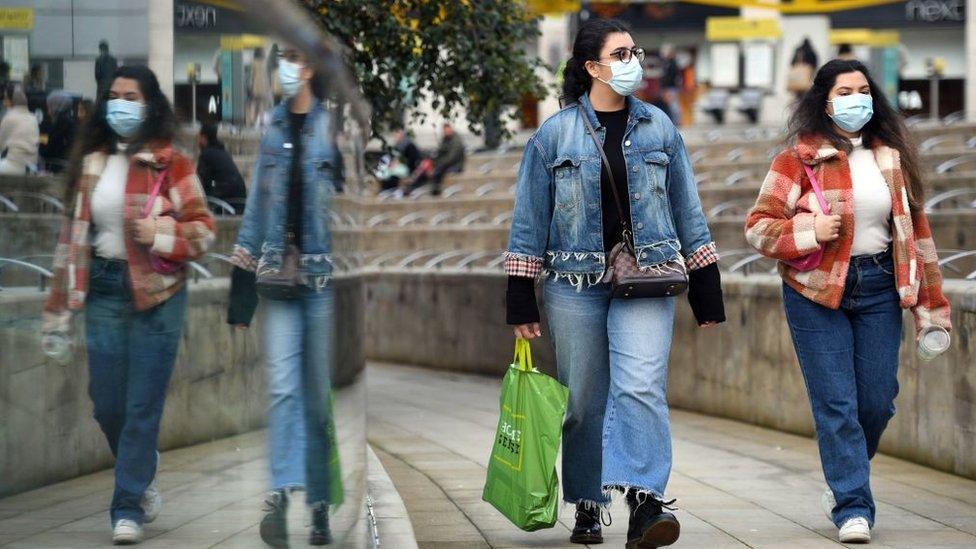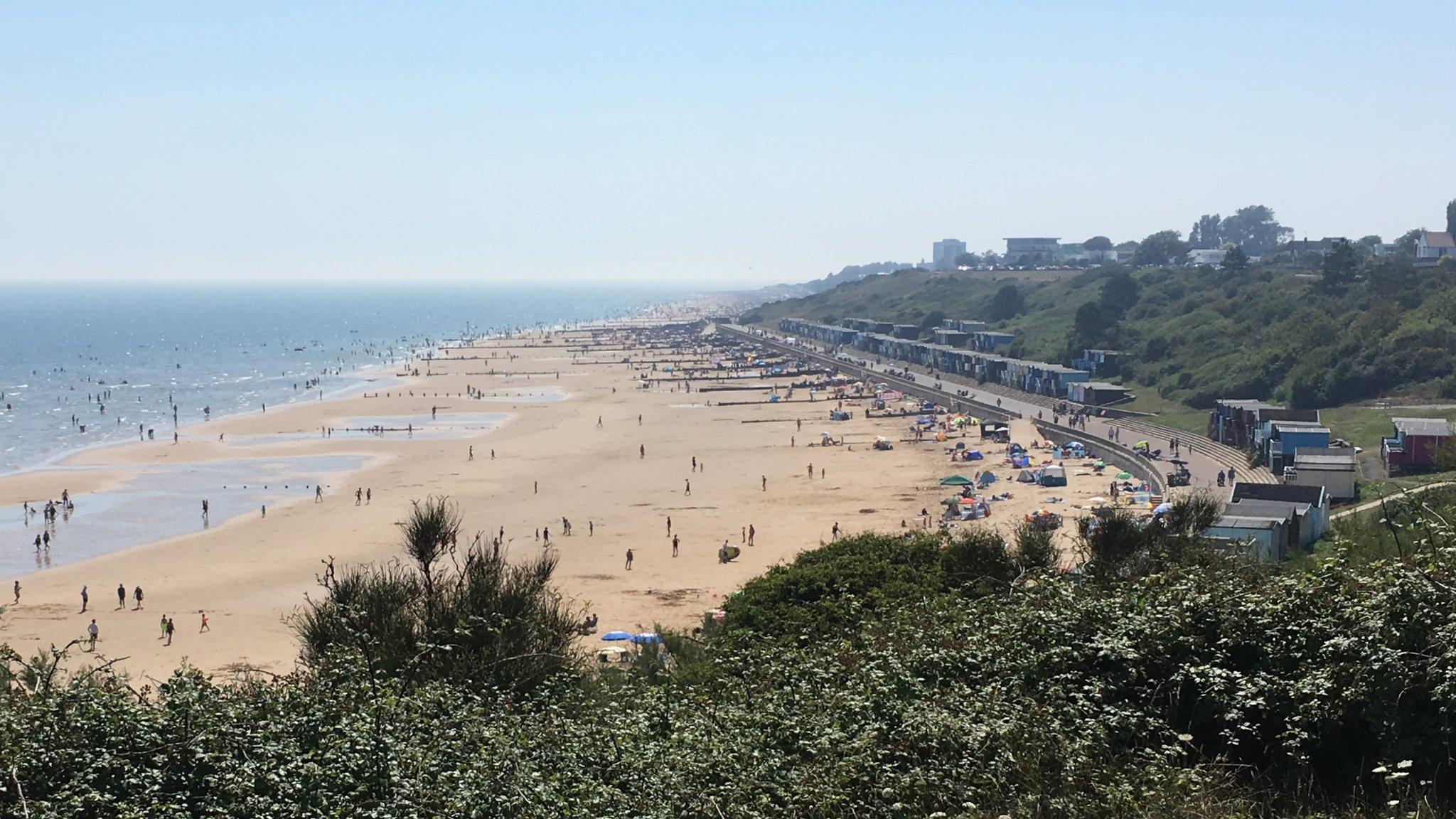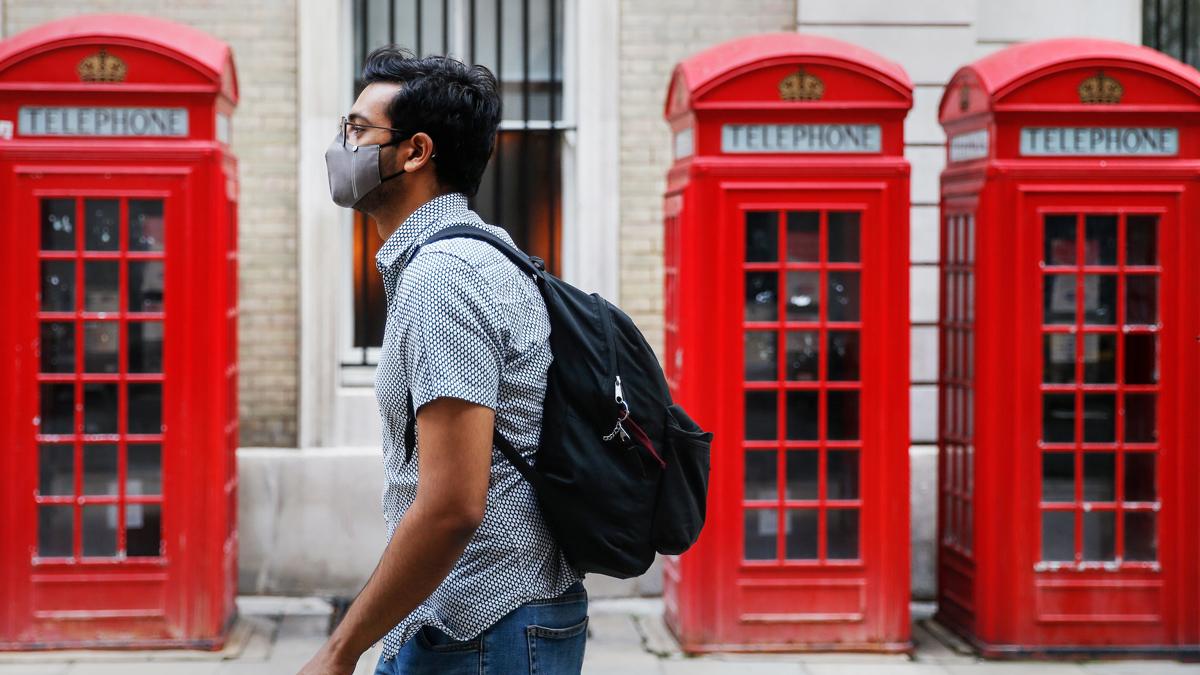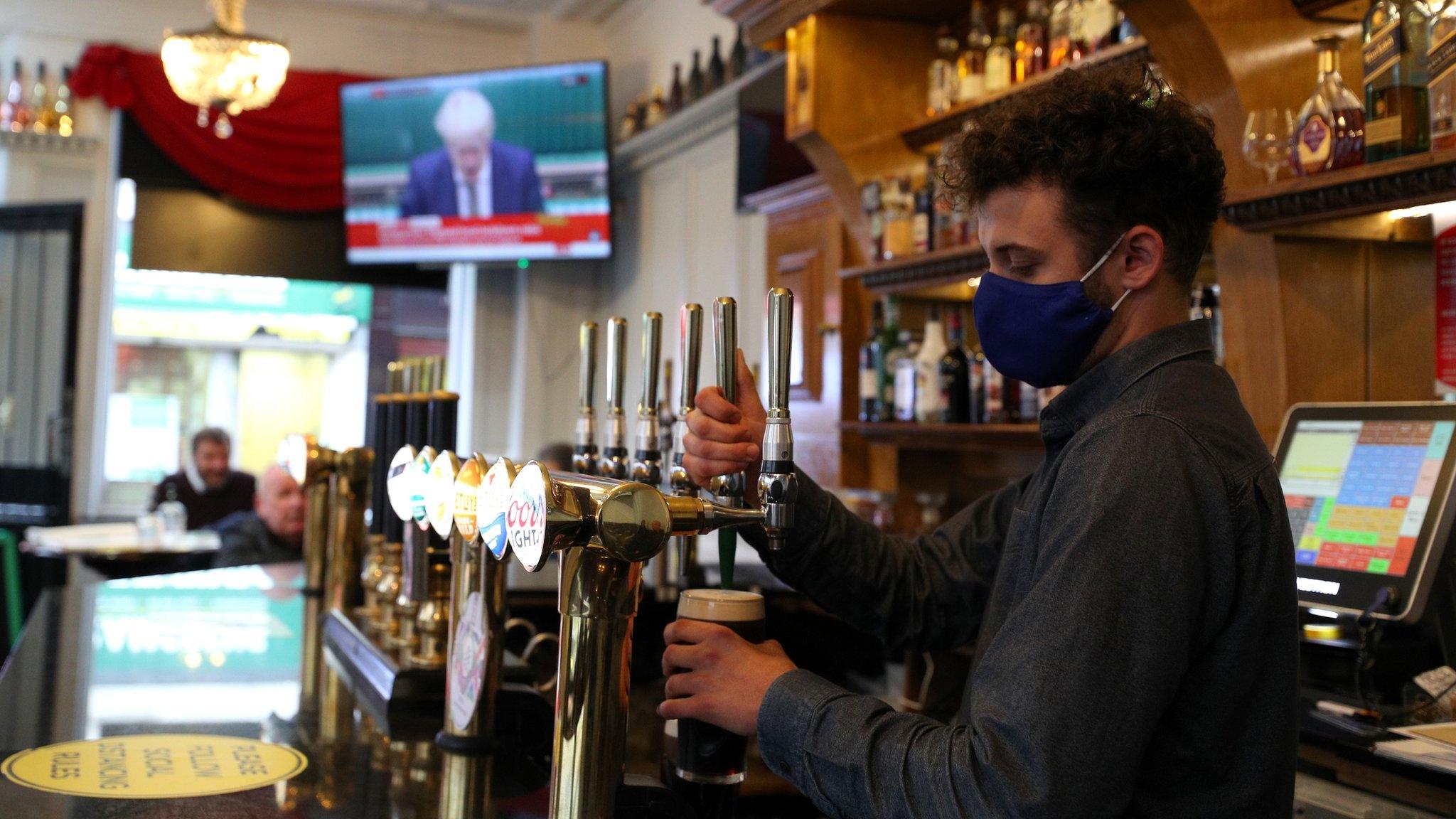Covid: Local leaders react to the three-tier system
- Published
- comments

Negotiations with local leaders are a key part of deciding whether an area moves into a higher level of restrictions in England's new three-tier Covid alert system. But while some are resisting additional measures, others want them to be introduced urgently.
For Greater Manchester mayor Andy Burnham, the new system of local coronavirus measures is "fundamentally flawed".
The three-tier system was announced on Monday, with only the Liverpool region being placed in the highest level with the toughest restrictions.
Andy Burnham told the BBC he "resisted" Greater Manchester being placed in the same category because it would cause "certain harm" to the economy.
Downing Street has defended the system - which categorises every area in England as on medium, high or very high alert - as difficult but necessary "to protect the NHS and save lives".
Meanwhile, Essex, which is currently in the medium tier, has become the first place to call for extra restrictions.
The county said it should be moved to high alert to prevent "further escalation" into the very high tier later, leading to damage to the economy.
And in London, the mayor Sadiq Khan has said that it is inevitable the capital will pass a "trigger point" in the next few days that should move the city from the medium level to the high level.
The move would see nearly nine million people banned from mixing with other households indoors, including in pubs and restaurants.
'Fragile economies'
Mr Burnham, mayor of Greater Manchester, told BBC Radio 5 Live's Emma Barnett Show, there was not "a proper economic support package" to help areas put into the highest tier.
He added: "And they're trying to pressurise people into tier three, even though it will do certain harm to those economies, often quite fragile economies in the north.
"That is why tier three as currently constructed is fundamentally flawed and why we have resisted being pushed into it."
Manchester does not have Covid hotspots to the same degree as Liverpool, which is the only area to be placed in the highest tier, and the number of people admitted to hospital is lower, Mr Burnham said.
And he said England's chief medical officer, Prof Chris Whitty, had acknowledged he was not confident the base tier three measures "would be enough".
Mr Burnham said that he would prefer a short "circuit-break" national lockdown to "reset things", including putting the Test and Trace system under local control. It was revealed on Monday that the government's scientific advisers had called for a short lockdown of this kind last month.
Leeds Council leader Judith Blake said they needed a better understanding of "the full implications" of moving from tier two to the highest level of alert, including the impact on the economy and the likely effect on reducing the number of infections.
And Jamie Driscoll, the North of Tyne mayor whose area is also in the second tier, said the new system was like "whack-a-mole without knowing where the moles are", because of failings with the test and trace system.
Recommendations over which areas are placed in particular Covid alert levels are made at a series of daily and weekly meetings involving NHS Test and Trace, Public Health England, the chief medical officer, the Department for Health and Social Care and ministers, along with the Joint Biosecurity Centre.
A final decision is only made after consultation with local authorities and local leaders.
Under tier three, or the very high alert level, these talks also decide any additional measures that are deemed necessary to bring the infection rate under control.
But Liverpool mayor Steve Rotheram said it was "totally false" that the new measures had been agreed to locally, external - instead they had been "dictated to us by the government".
Downing Street said talks were continuing with local leaders in the north of England to agree tier three restrictions in more areas.
"The PM said these are difficult steps - but we have to protect the NHS and save lives," a Number 10 spokesman said.
But he said the government does have the power "to impose measures" if it deems them necessary.
What are the restrictions?
Most places are under the lowest tier, the medium alert level, with current restrictions continuing, including the 10pm hospitality curfew and the rule of six.
Areas already under additional local restrictions are automatically in the high alert level, which means bans on household mixing indoors are extended to include hospitality venues.
The very high alert level - at a minimum - sees pubs and bars close if they do not serve "substantial meals", almost all household contacts banned and advice against travel. The rule of six will continue to apply in outdoor public spaces such as parks.
In Liverpool City Region, betting shops, gyms, leisure centres and casinos are also being closed as part of additional measures.
Essex is calling for its 1.4 million residents to be placed on the high alert level after its director of public health warned the increase in cases would continue to accelerate without urgent action.
Council leader David Finch said they wanted "above all" to avoid the economic damage of being placed in the highest tier of restrictions at a later stage.
"Making these painful decisions now will, we hope, bring dividends later," he said.
Bristol's mayor Marvin Rees called for local authorities to be given the power to impose additional restrictions themselves, as well as the resources to support businesses that have to close.
He said the government is "lending its attention to the areas causing the most concern" so places such as Bristol, with lower infection rates, risked being overlooked, although their case numbers would have been considered "horrific" three weeks ago.
- Published13 October 2020

- Published1 July 2022

- Published13 October 2020
